- In 2020, Mongabay and others reported on several announcements of species new to science.
- Snakes, insects, many new orchids, frogs, and even a few mammals were named in 2020.
- In no particular order, we present our 15 top picks.
In this well-trodden world, the discovery of a species new to science is an exciting event, a glimmer of the uncharted riches of biodiversity still hidden around the globe.
“Every year, as scientists explore the world’s ecosystems, search herbaria and fungaria, sequence organisms’ DNA and, increasingly, browse social media, they come across species of plants and fungi that have not been scientifically described,” says the “State of the World’s Plants and Fungi 2020” report, released in September by the Royal Botanic Gardens, Kew (RBG Kew).
Many new species were described this year, including several snakes, frogs, insects, and even new primate species. Turning to the ocean, scientists spotted a beaked whale that may be a new species and a mysterious coiled siphonophore believed to be the longest animal ever recorded.

Plants and fungi also continue to represent an underexplored frontier of diversity. This year, the RBG Kew named 156 plants and fungi from Africa, Asia, the Americas, and the U.K. The Missouri Botanical Gardens recently named 10 charismatic plant discoveries from 2020, including a new species of ebony tree, a carnivorous sundew, and a new mint. However, although a species may be new to science, that doesn’t mean it has never been seen or named.
“Many species that are new to science are already known and used by people in the region of origin — people who have been their primary custodians and often hold unparalleled local knowledge,” writes Alexandre Antonelli, director of science at RBG Kew.
Let’s take a look at our top 15 species new to science in 2020:
A new mouse lemur emerges from the tiniest group of primates in the world

Mouse lemurs, a group of shy nocturnal primates, are found on the island of Madagascar and considered the smallest group of primates in the world. They are about the size of a human fist. Scientists distinguished this new species, the Jonah’s mouse lemur (Microcebus jonahi), from other mouse lemurs based on both its appearance as well as genomic data and mitochondrial DNA. The Jonah’s mouse lemur is a bit bigger than the average mouse lemur and has a reddish-brown body with a white stripe on its nose, thick fur and small ears. As far as researchers know, it occurs only in a small swath of lowland rainforest in northeast Madagascar, in Mananara Nord National Park. Here, it faces threats from deforestation as Madagascar’s forests are laid bare. There are 108 species of lemurs and 25 species of mouse lemurs. All are threatened with extinction.
An expedition into the Bolivian cloud forest reveals a new frog, among the smallest in the world

Measuring around 10 millimeters (0.4 inches), about the size of an aspirin tablet, the tiny lilliputian frog (Noblella sp. nov.) was found living in tunnels beneath the moss and humus in a cloud forest in the Zongo Valley near La Paz, Bolivia. Researchers said it was exceedingly difficult to find, despite its distinctive call. The expedition into the Zongo Valley uncovered 20 species new to science including a new mountain fer-de-lance (Bothrops monsignifer), several orchid and butterfly species, and a few species thought to be extinct, including the devil-eyed frog (Oreobates zongoensis).
A beautiful and endangered langur species found in Myanmar
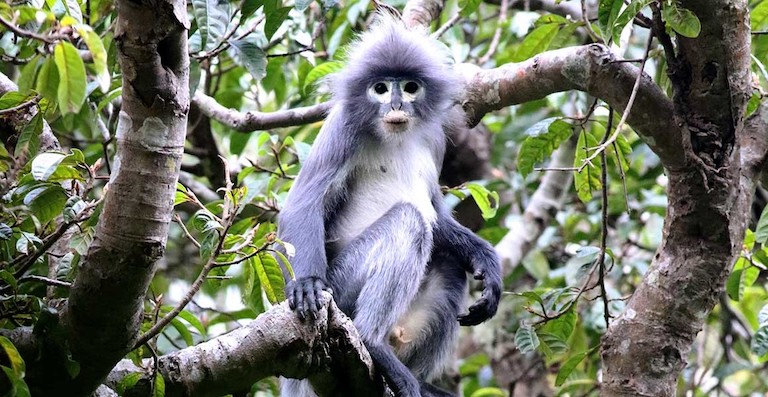
A new primate species, the Popa langur (Trachypithecus popa), was identified in the lab, using samples of tissues from museum specimens, captive species, and fecal samples from wild animals collected in the forests of Myanmar. Only around 200 to 260 Popa langur individuals are known to exist, spread across four separate populations. The safest population, according to researchers, lives in an area of forest only about 26 square kilometers (10 square miles) in size, which may not give it room to sustain a growing population. Although its status has not been formally assessed, it qualifies for a “critically endangered” designation under the IUCN Red List criteria.
A new Indian pit viper named after a Harry Potter character

A new green pit viper species was found in the Himalayas and named Trimeresurus salazar, or the Salazar’s pit viper, after Salazar Slytherin, a character from J.K. Rowling’s Harry Potter series. The snake, which is nocturnal and has a unique reddish-to-orange stripe on the head and body of males, was discovered during a herpetological expedition in the northeasternmost state of India, Arunachal Pradesh, which has been home to many new discoveries of plants and animals in recent decades.
A false gecko found in the Philippines

On a collection trip on the southeastern tip of the Philippines’ main island of Luzon, researchers found several species of false geckos, the final one receiving its name this year: the Bicol hollow-dwelling forest gecko (Pseudogekko hungkag). Hungkag means “hollow” in Filipino, and is a nod to the gecko’s tendency to hide in hollow areas such as logs. It has inverted “Y” shaped markings along its entire tail, and golden-yellow eyes that reflect in the light of a flashlight. The Bicol hollow-dwelling forest gecko is only the 10th species from the genus Pseudogekko (false geckos), all of which are found exclusively in the Philippines. Their quick movements and camouflage make them very difficult to find, and little is known about their habitat range and requirements.
Though newly described to science, this Madagascar giant frog is well known at the dinner table
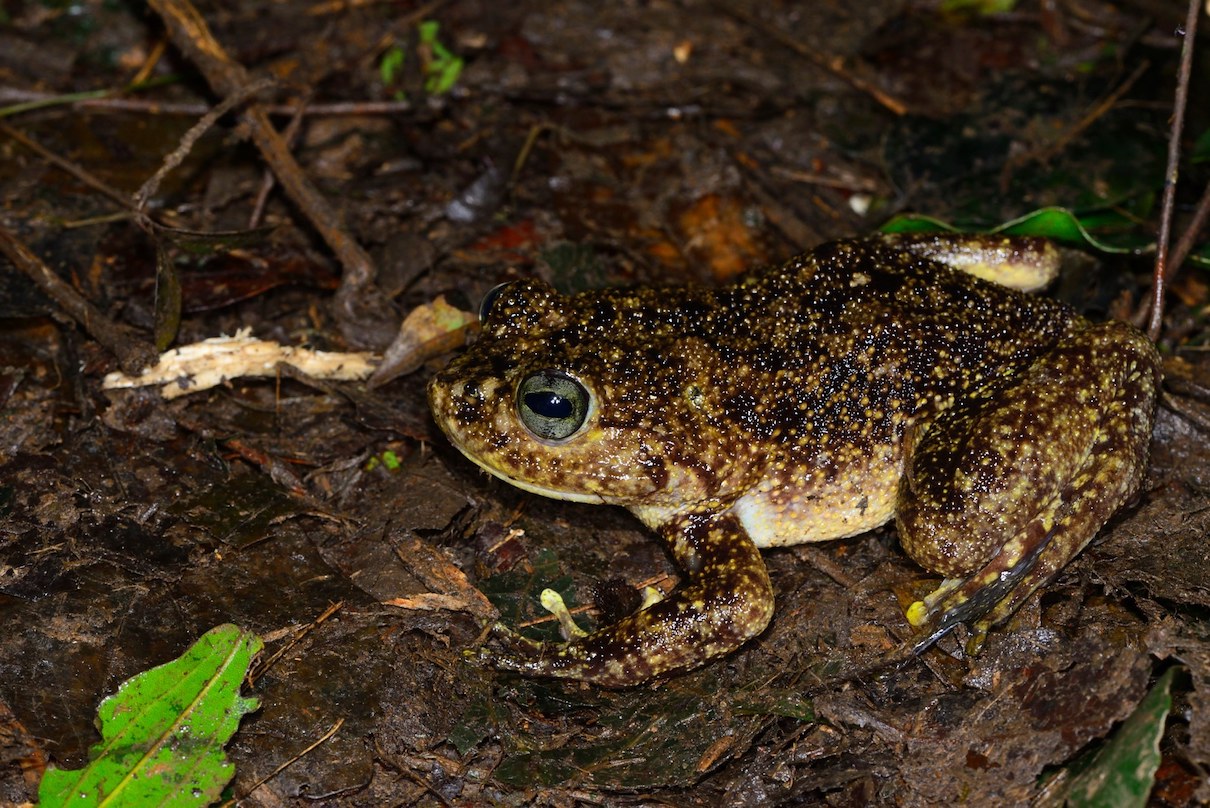
Frog fritters and frog legs are on the menu in many Madagascan towns, where giant frogs are bred in ponds or easily caught in the countryside and brought to the table. One of these giant frog species, which reaches body lengths of more than 10 centimeters (4 inches), drew the attention of researchers. Using genetic analysis, scientists found that this frog, while well-known to locals, was unknown to science. It has been distinguished from other Mantidactylus frog species in its genus and named Mantidactylus radaka. Radaka is the traditional name for the large frog. There are now 362 recognized species of frogs in Madagascar.
15 new wasp species found in Brazil that parasitize spiders
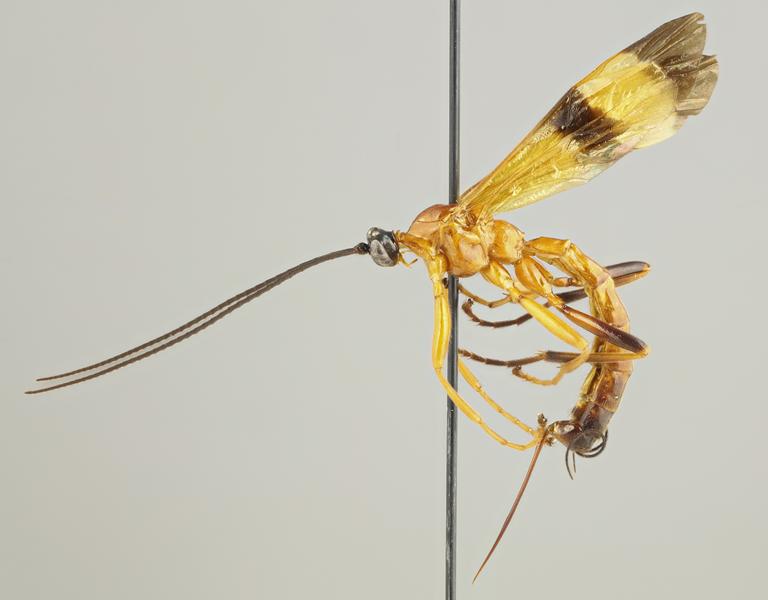
A group of researchers found 15 new wasp species in the Andean cloud forests and Amazon rainforest of Brazil. All of the wasps are in the genus Acrotaphus and all parasitize spiders in a unique way. Female Acrotaphus wasps use venom to temporarily paralyze a spider in its web. The wasp then lays a single egg on the spider. While the spider is hosting the wasp egg, it no longer weaves its normal web, but builds a web that will protect the developing wasp pupa. Once the wasp egg hatches, the larvae eats its spider host and then lives in the specially built web while it pupates.
Orchids galore described in New Guinea


An astounding 19 species of newly described tree-dwelling orchids were found on the richly biodiverse island of New Guinea by an orchid specialist from the Royal Botanical Gardens, Kew. Three of the new species are in the Dendrobium genus, known for its beautiful flowers. The other 16 species are in the Bulbophyllum genus, which are generally fly-pollinated and thus have flowers that appear to be hairy like a mammal. New Guinea has the most plant species of any island, and researchers believe there are still many species here yet to be named.
A shiny salamander from the U.S. finally gets a name

More than 50 years after it was first collected, a new species of salamander has been identified by researchers using next-generation DNA sequencing technology. The Carolina sandhills salamander (Eurycea arenicola) is found in the springs and small streams in the sandhills region of the U.S. state of North Carolina. The state has 64 named salamanders, more than any other state in the country. The sandhills region holds some of the last remaining 5% of longleaf pine ecosystem in the U.S.
This scaly shrub species became a whole new plant family
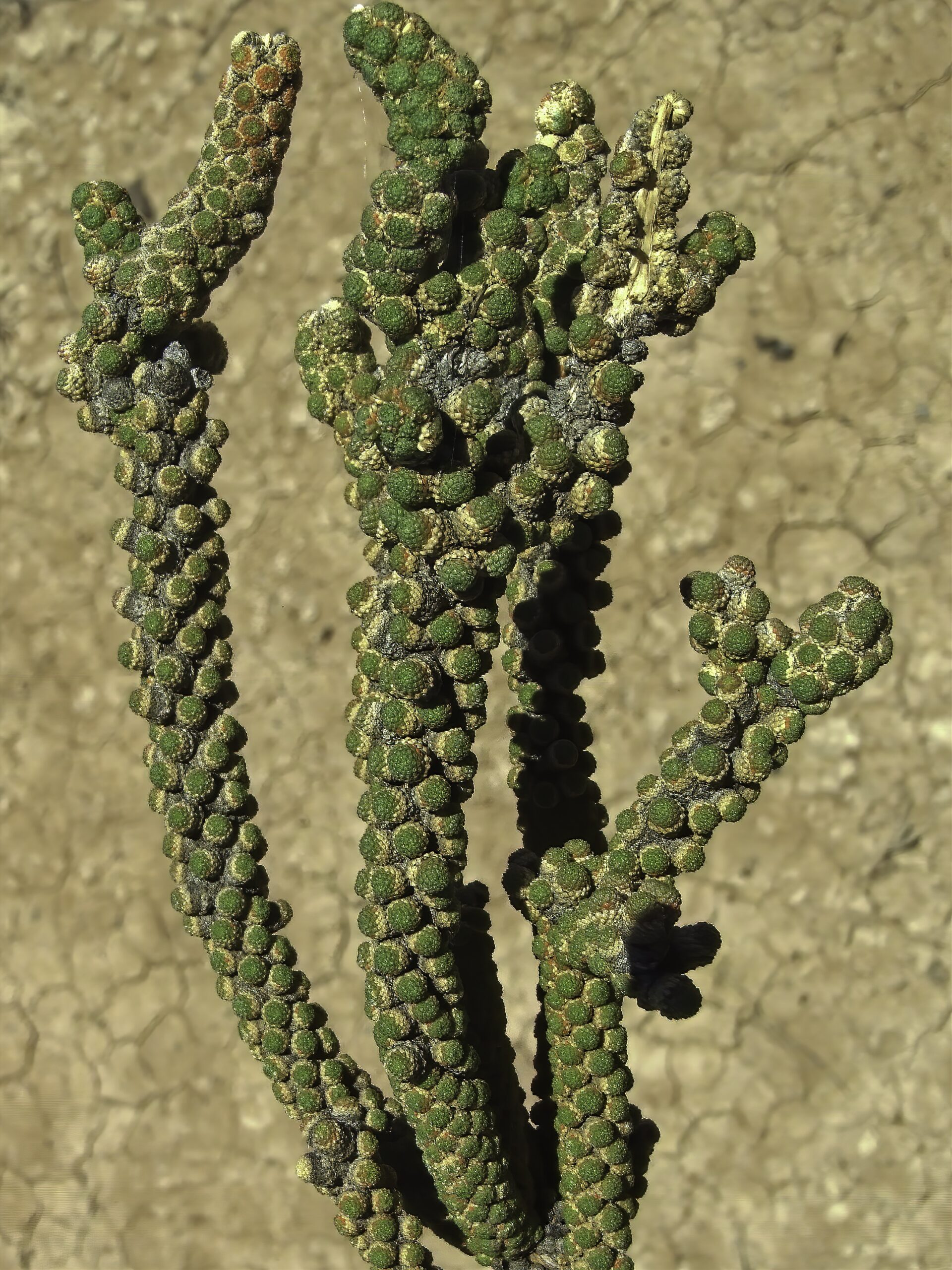
A unique, evergreen shrub, Tiganophyton karasense, was found in southern desert of Namibia. DNA analysis revealed that the dwarf shrub was distinct enough to be considered its own family, Tiganophytaceae, within the order Brassicales, the same as broccoli and cabbage. It has scaly leaves and thrives in the salt pans of the semi-desert, surviving in temperatures as high as 36° Celsius (96° Fahrenheit). Fewer than 1,000 individuals are known to exist.
A giant scorpion found in Sri Lanka

During a nighttime survey of Yala National Park, Sri Lanka’s most popular wilderness area, researchers found a new scorpion species that has been named Heterometrus yaleensis, or the Yala giant scorpion. Females of the species can grow to a length of 103 mm (4 in) and males to 75 mm (3 in.). The large, forest-dwelling scorpions are found only on the Indian Ocean island of Sri Lanka, where interest in scorpions has peaked after a series of deaths caused by a different scorpion, the invasive Indian red scorpion (Hottentotta tamulus). Scorpions are prey to the illegal wildlife trade, because of their popularity as pets.
An iridescent snake shines through in Vietnam

A new, iridescent snake from the Ha Giang province of Vietnam was described by researchers this year. Its oddly patterned scales, iridescence, and lack of bright-light photoreceptors in its eyes are adaptations for its mostly underground, burrowing lifestyle. Researchers believe this species, which they named Achalinus zugorum, evolved earlier than most other snakes, and could help to shine new light on snake evolution. But because they mostly remain underground, they are especially difficult to find.
A purple tree-spider crab found in India

This new species of tree-spider crab, Leptarma biju, was found on the pillars of a bridge near mangroves at the mouth of Chithari River in Kerala, India. It’s purple and very small — 14 by 13 mm, or 0.6 by 0.5 in. — and is the first of its genus to be found in the country. Crabs are considered “ecosystem engineers” of mangrove ecosystems, as their burrowing aerates the soil and their diets recycle nutrients. Researchers plan to further explore the area for hidden diversity.
Six new mushroom species unearthed in the UK, one near Heathrow airport

This year, six new species of webcap toadstool mushrooms have been named. Three were found in Scotland and three in England. All are in the genus Cortinarius, which supports the growth of trees such as oaks and pine. One of the species, Cortinarius heatherae (pictured), was found by a river on the boundary of London’s Heathrow airport, one of the world’s busiest.
A striking new velvet spider named after musician Lou Reed
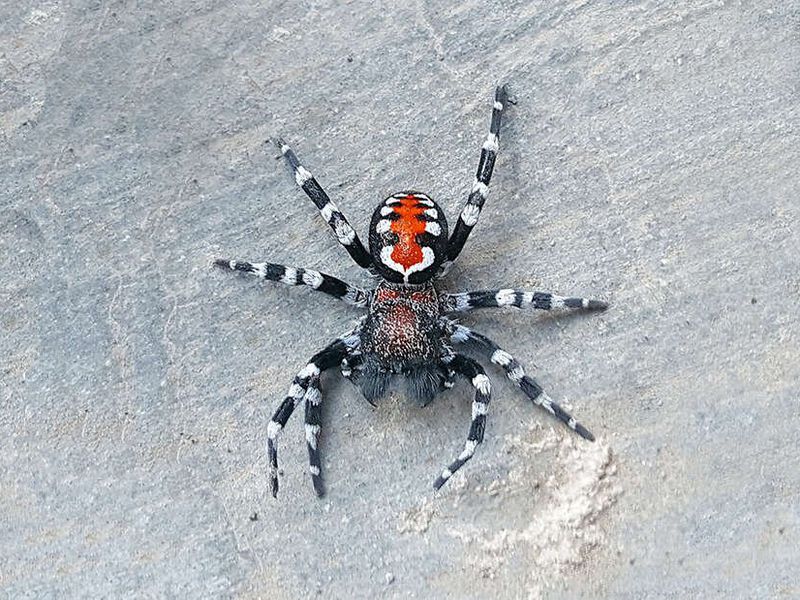
Found in Iran, this new species of velvet spider sports a striking red-and-white pattern that reminded researchers of the iconic grin of the Joker, Batman’s nemesis, portrayed by actor Joaquin Phoenix in the 2019 film. The tiny spider, named Loureedia phoenixi, measures only 8 mm (0.3 in.) long and is the first of its genus to be found outside of the Mediterranean. Loureedia spiders, named for the late punk rocker Lou Reed, exhibit unique behaviors such as building communal nests and cooperatively caring for their young.
Mongabay’s year-in-review series:
Oceans | Environment | Indonesian palm oil | Notable conservation deaths | Rainforests | Indonesia’s environment | Madagascar’s environment | Notable conservation books | Mongabay’s most popular
Banner image of newest langur species discovered in Madagascar, the Popa langur (Trachypithecus popa). Image by Thaung Win.
Liz Kimbrough is a staff writer for Mongabay. Find her on Twitter @lizkimbrough
FEEDBACK: Use this form to send a message to the author of this post. If you want to post a public comment, you can do that at the bottom of the page.